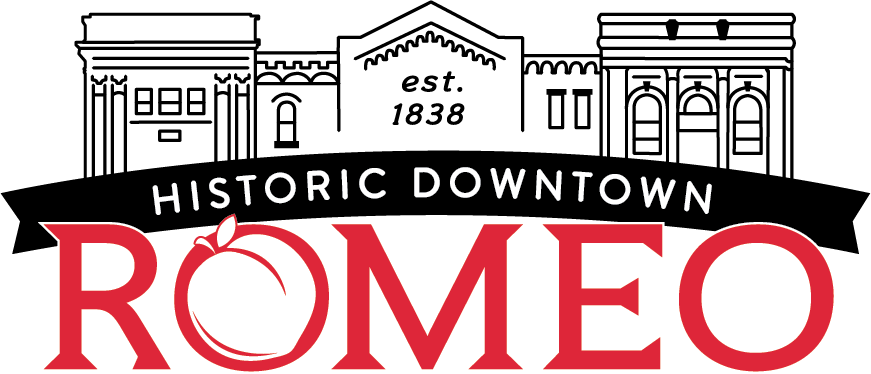Tracing the Journey of Romeo's Heritage
The first settlers came to Romeo in the 1820’s. The area was first known as “Indian Village” because the Chippewa Indians had their winter campgrounds here. The name was later changed to “Hoxie’s Settlement” and the center of the present village was platted in the spring of 1830 under the direction of Nathaniel T. Taylor, the first merchant; Ashael Bailey, one of the earliest land owners; and on Mayor Larned of Detroit. It was Mrs. Taylor who suggested the Name “Romeo” because it was “Short, musical, classical and uncommon.”
Many early residents of the Village gained wealth through farming, land speculation or lumbering, but merchandising seemed to offer the best opportunities and Romeo became a leading trading center rivaling Mt. Clemens by the 1850’s. A number of small industries were established including a hoop-skirt factory, a broom factory, a chair factory, and iron foundry, a cigar factory, a sash and blind factory and four separate carriage manufacturing companies – one with patronage as far west a s California.
As early as 1836, the Romeo Academy was formed and during the 1840’s the largest branch of the University of Michigan was located here. Emphasis on education attracted a large number of professional people to the village. Romeo citizens were involved in the great reform movements of the nineteenth century including the abolishment of slavery (Romeo was an important station on the Underground Railway), prohibition and women’s rights (Elizabeth Cady Stanton, one of the leading suffragettes of the century, was warmly welcomed to the village in 1871).
After the completion of the AirLine Railroad in 1869 the local merchants preferred to go to New York City rather than Detroit or Cleveland to purchase their goods. The wealthier families wintered in New Orleans or, later Florida and summered at Bay View or Mackinaw Island. Many local citizens traveled to Philadelphia in 1876 and to Chicago in 1893 to attend the world fairs.
By the 1890’s however, the older Romeo families were dying out and many of the sons and daughters had already moved to larger urban areas or westward to gain their own fortunes. Although the “golden age” had ended, the beauty and charm of that era has endured.
*Taken from “A Tour of Historic Romeo” by Richard M. Daugherty, published in 1970
Indian Village
The first settlers came to Romeo in the 1820's. The area was first known as "Indian Village"
Hoxie's Settlement
The center of the present village was platted in the spring of 1830 and called "Hoxie’s Settlement."
Railroad Completed
The railroad brought travelers from all over the country, allowed transportation of goods from far away, and gave Romeo residents the opportunity for easier travel.
Future
Where will Romeo be in 10 years? How about 100 years? What we do today will have a big influence on the answers to those questions.

